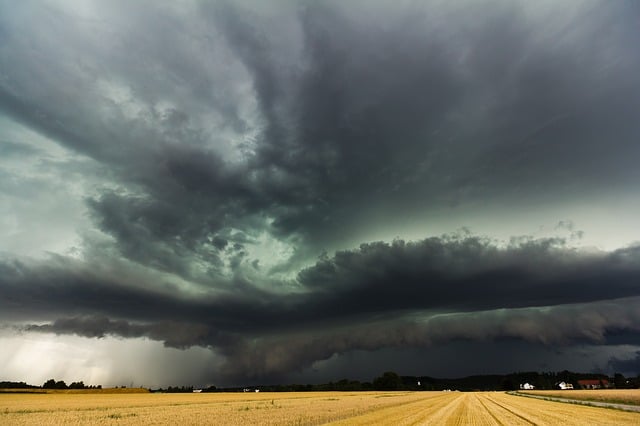Recent hailstorms in the province have left some producers with severely damaged crops, but they could still have value as a feed source.
“These damaged crops may be a loss as far as going into the bin is concerned but likely have good value as a feed source especially in year like this with the potential of higher than normal feed prices,” explains Ted Nibourg, farm business management specialist at the Alberta Ag-Info Centre. “The typical methods of harvesting a salvage crop are as greenfeed or silage.”
Nibourg says that pricing a standing crop – what some call it after a hailstorm – can be difficult. Three factors are involved in valuing that crop including price, production, and costs.
“Price in the pit or the bale is the most difficult of the three to determine. Forage prices do not settle until late fall. Production is determined after the crop is put up, and the costs can also be calculated at that time using typical custom rates.”
One method of arriving at price at this time of year is to use the guide of 12 times price of barley for silage. Says Nibourg, “Currently, the average barley price in the province is running $268 per ton or around $5.83 per bushel. This puts 35% dry matter silage in the pit at $70 per wet ton. Converting that to a greenfeed equivalent at 85% dry matter, gives us a greenfeed price in the bale of about 8.5 cents per pound.”
“With those numbers in mind, we can calculate the value of the standing salvage crop,” he explains. “If the salvage crop produced 4 wet tons of silage per acre, the cost of putting that in the pit would be around $17.60 per wet ton. That would leave a value of $52.40 per wet ton for the standing crop. If the yield jumps to 5 wet tons per acre, the costs for putting it up is reduced to $16.55 per wet ton, using average custom rates. That level of production leaves $53.45 per wet ton for the standing crop.”
He adds that from a greenfeed perspective, the process is similar. “If the greenfeed yields 1.5 tons per acre or 2.5 bales per acre weighing 1,200 pounds, the cost for putting up the greenfeed runs approximately $32 per bale. A 1,200 lb. bale at 8.5 cents per pound would be worth $102 per bale. Subtracting the $32 leaves a value of $70 per bale for the standing crop. Likewise, if the crop yields 1.8 tons per acre or 3 bales, the costs involved drop to $29 per bale, leaving $73 per bale for the salvage crop.”
“Keep in mind that the prices used here are for illustrative purposes only and may not materialize as the crop season progresses,” he adds. “Forage prices in this province do not settle until late fall. At that time, most producers have a good idea of overall forage production. By late October, one can reasonably estimate the type of winter to expect which has a bearing on feed disappearance. The fall calf market will give a good indication whether calves will be back grounded or sent directly to feedlots, and also what the cull rate on cows will be.”
Source: Alberta Ag





